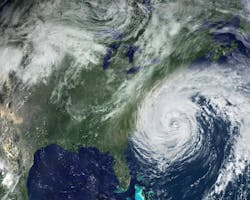USRA, BCG X AI Science Institute, and NASA release open-source AI model for extreme weather forecasting
WASHINGTON - A collaboration between the Universities Space Research Association (USRA), Boston Consulting Group’s BCG X AI Science Institute, and the National Aeronautics and Space Administration (NASA) has led to the open-source release of a new artificial intelligence model designed to improve the prediction of extreme weather events.
The model, known as GAIA (Geospatial Artificial Intelligence for Atmospheres), is a generative AI system trained on 25 years of data from the U.S. Geostationary Operational Environmental Satellites (GOES), as well as data from European Meteosat and Japanese Himawari satellites. Its initial capabilities include filling gaps in satellite data and precipitation modeling, with plans to support forecasting of tropical cyclones, atmospheric rivers, and other severe weather patterns.
"This new collaboration with USRA, BCG X, and NASA goes beyond the foundation model research that USRA and NASA are already doing for Earth observation and space weather—it takes it a step further into tracking and forecasting extreme weather applications," said Dr. Elsayed Talaat, President and CEO of USRA.
NASA seeks industry input for space weather satellite development
The release marks the first major milestone from a partnership formed in April 2024 as part of USRA’s Generative Artificial Intelligence Lab for Science & Engineering. The initiative brings together USRA’s expertise in Earth science and AI, BCG X’s engineering and data science resources, and NASA’s satellite data, in conjunction with the National Science Foundation’s National Research Platform (NRP).
New approach
Traditional machine learning approaches often require separate models for individual weather events. In contrast, GAIA serves as a unified foundation model capable of analyzing multiple extreme weather phenomena under a single framework.
"This model advances the state-of-the-art with a new approach for balancing attention of the model across local and global features in geospatial data and represents a step towards our broader vision of geospatial AI for public good applications," said Dr. David Bell, Director of USRA’s Research Institute for Advanced Computer Science (RIACS) and co-founder of the GenAI Lab for Science and Engineering.
The GAIA model is publicly available through the Hugging Face platform at https://huggingface.co/bcg-usra-nasa-gaia, reflecting the team’s commitment to open science and collaboration.
About the Author
Jamie Whitney
Senior Editor
Jamie Whitney joined the staff of Military & Aerospace Electronics in 2018 and oversees editorial content and produces news and features for Military & Aerospace Electronics, attends industry events, produces Webcasts, and oversees print production of Military & Aerospace Electronics.
